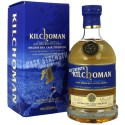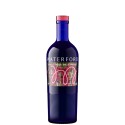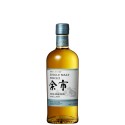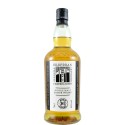How to taste whisky?
Tasting whisky is a sensory journey, which goes beyond the simple act of drinking.
Whisky is a beverage full of flavors, aromas and sensations just waiting to be discovered!
In this article we will guide you through the stages of whisky tasting, offering some practical tips on how to best appreciate its complexity.
Which glass to taste whisky?
Choosing the right glass for tasting is crucial.
The classic tumbler is actually not ideal for whisky tasting, but the nosing glass, which is suitable for olfactory analysis due to its tulip-like shape, is preferable.
The nosing glass has a narrower mouth, which is necessary to retain the aroma given off by the whisky, so that when you smell it, you can perceive the fragrance to the fullest.
It would be useful to cover the glass with a watch glass cover, a stopper to retain the aromas, but it is not essential.
Whisky tasting
It is really curious how the sense of smell is more important than taste in tasting.
Taste, in fact, is the union between the primary impression, which is felt on the tongue, and the aromas perceived by the nose, which is much more sensitive.
Suffice it to say that for every taste bud on the tongue there are as many as 10,000 receptors in the nose.
For this very reason, sommeliers, even before tasting, smell.
When tasting whisky, one must also consider the alcohol content of the chosen product. The majority of malts are bottled at 40%, but there are some that reach higher levels, such as 46%.
For this reason, to evaluate more whiskies one should bring them to the same alcohol content.
According to experts, the industry standard is 20% alcohol by volume.
Some will probably disagree, but it has been found that taste receptors work better when they are not anesthetized by alcohol.
There are multiple ways to bring the alcohol content to the desired level: some people dilute the whiskey or add lemon or ice.
Now we come to the actual tasting.
It is important to take a long sniff and, perhaps, take note of the initial impressions.
If you feel tingling in the nose, it means that the inhalation was excessive: this only temporarily overloads the sense of smell.
In that case, you need to take a short break and return to gentler inhalation.
Generally, two graduations are indicated on one side on the nosing glasses: a lower one, indicating the level to be filled with whisky, and an upper one, to be reached with water.
These two graduations correspond to two equal volumes, assuming the whisky is bottled at 40%. Should the percentage be higher, a correction is necessary.
Now it is time to taste: just take a big sip to feel its body and viscosity.
By moving the whisky in the mouth, it is possible to sense the balance of salty, sweet, sour and bitter aromas.
Using your sense of smell, on the other hand, you can perceive the intensity of the aromas and fragrances of the whisky.
When swallowing, pay attention to the persistence of the aromas in the mouth: usually, the greater it is, the more the whisky is enjoyed.
Those who are just approaching the world of spirits will most likely prefer lighter, "aperitif" products, while the more experienced will seek complexity and depth.
Classifying whiskies
Those judging the quality of whiskies generally give a rating between 1 and 10 based on balance, duration and complexity. Thus, a neophyte's preferences will not necessarily match those of a connoisseur.
A balanced whisky will not have a dominant aroma, but rather a combination that gradually emerges.
It is precisely for this reason that sommeliers describe whisky in a certain order: color, aroma, taste and aftertaste, which is the sequence by which whisky is tasted.





